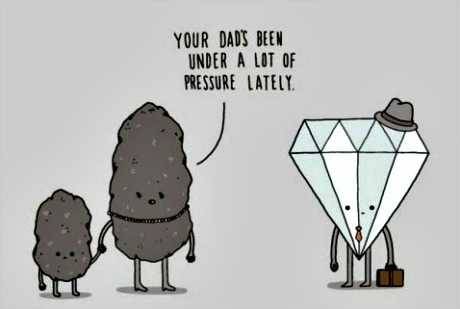A Visualisation Of The Recent Rapid Change In Temperature.

A Visualisation of the Recent Rapid Change in Temperature.
(GreenPeace)
More Posts from Drunkscience4u and Others
Please subscribe, like, comment, and donate! Stay tuned for Bloopers from this episode on April 22, 2017. This was the last episode of this season. Keep an eye out on the facebook page for more information on Season 2. Please comment below for any experiments or simple science you'd like us to explain while drunk! Starring: Candice Lola Directed by Rebecca Berger Produced by Rebecca Berger and Candice Lola Written by Candice Lola Editing, Color, Sound Design by Rebecca Berger Animation by Rachael K McDonald Links: Music: http://ift.tt/1JICaNj and http://ift.tt/2lquxdO http://ift.tt/2lINlQJ http://ift.tt/2lqtjzr http://ift.tt/2lIL08B http://ift.tt/2lqvuCQ (Donations are always welcome!) http://ift.tt/2lITyw7 http://ift.tt/2lqvQJO

Drunk Science is HERE!!! Our first episode explains the mystery of slime. It also makes drunken attempts at humor and references super heroes. It's literally everything you could ever need. Click link in bio to watch! #drunkscience #stem #blerd #funny #science #drunk #labcoat #youtube #experiment http://ift.tt/2mQUVL1









Black Hole Caught Devouring Star For An Entire Decade
“Normally lasting weeks or months, a new record has just been set for TDEs. XJ1500+0154, 1.8 billion light years away, is the largest, longest-lasting one ever seen. First detected in July of 2005, the X-rays from this distant source brightened by a factor of 100 over 3 years. They remain bright even today. Although dozens of TDEs have been observed since the 1990s, none have lasted this long. It may be caused by the most massive star ever observed creating a TDE.”
When any object passes too close to the event horizon of a black hole, the tidal forces acting on it can become so strong that they’ll tear the entire object apart in a spaghettification disaster. While most of the matter will get ejected from the encounter, a significant fraction can be accreted, absorbed and used to fuel the black hole’s growth. These tidal disruption events have been seen numerous times since the launch of our X-ray observatories, and are now known to come in a wide variety of magnitudes, at a variety of distances and to last a variable amount of time. So when you see the largest, longest-lasting one ever, you sit up and take notice! That’s exactly what’s happened with XJ1500+154, which is now in its second decade of X-ray signals.
Come get the full story on this amazing object, and learn how it might solve the puzzle of supermassive black hole growth on today’s Mostly Mute Monday!









The First Galaxies: What We Know And What We Still Need To Learn
“As we look farther back in time, we find that younger galaxies formed stars at faster rates than galaxies do today. We can measure the star-formation rate, and find that at earlier and earlier times, it was more intense. But then we find it hits a peak when the Universe is about two billion years old. Go younger than that, and the rate goes down again.”
We’ve come incredibly far in our quest to learn how the Universe came to be the way it is today. We can see out in space for tens of billions of light years, to galaxies as they were when the Universe was only a few percent of its present age. We can see how galaxies evolve, merge and the stars inside change. And we can see to even before that, when no stars or galaxies existed at all. But how did we get from there to here? There are still plenty of gaps in the story. We’ve never seen the first stars or galaxies; we’ve never witnessed the start of cosmic reionization; we’ve never seen the star formation rate jump from zero to a real, finite number. Yet with James Webb and WFIRST on the horizon, these gaps in our knowledge may – if we’re lucky – all disappear.
Come get the story on what we know about the first galaxies, and what we hope and have left to still learn!








The Science Has Spoken: Pluto Will Never Be A Planet Again
“What’s perhaps most remarkable is that we can make a simple, mathematical relationship between a world’s mass and its orbital distance that can be scaled and applied to any star. If you’re above these lines, you’re a planet; if you’re below it, you’re not. Note that even the most massive dwarf planets would have to be closer to the Sun than Mercury is to reach planetary status. Note by how fantastically much each of our eight planets meets these criteria… and by how much all others miss it. And note that if you replaced the Earth with the Moon, it would barely make it as a planet.”
It was a harsh lesson in astronomy for all of us in 2006, when the International Astronomical Union released their official definition of a planet. While the innermost eight planets made the cut, Pluto did not. But given the discovery of large numbers of worlds in the Kuiper belt and beyond our Solar System, it became clear that we needed something even more than what the IAU gave us. We needed a way to look at any orbiting worlds around any star and determine whether they met a set of objective criteria for reaching planetary status. Recently, Alan Stern spoke up and introduced a geophysical definition of a planet, which would admit more than 100 members in our Solar System alone. But how does this stand up to what astronomers need to know?
As it turns out, not very well. But the IAU definition needs improving, too, and modern science is more than up to the challenge. See who does and doesn’t make the cut into true planetary status, and whether Planet Nine – if real – will make it, too!
Please subscribe, like, comment, and donate! Next (and last) episode April 15, 2017. Starring: Candice Lola Directed by Rebecca Berger Produced by Rebecca Berger and Candice Lola Written by Candice Lola Editing, Color, Sound Design by Rebecca Berger Animation by Rachael K McDonald Links: Music: http://ift.tt/1JICaNj and http://ift.tt/2lquxdO http://ift.tt/2lINlQJ http://ift.tt/2lqtjzr http://ift.tt/2lIL08B http://ift.tt/2lqvuCQ (Donations are always welcome!) http://ift.tt/2lITyw7 http://ift.tt/2lqvQJO
-
 shutupandsim liked this · 1 year ago
shutupandsim liked this · 1 year ago -
 cyarsk5230 reblogged this · 1 year ago
cyarsk5230 reblogged this · 1 year ago -
 leptoquark3 reblogged this · 1 year ago
leptoquark3 reblogged this · 1 year ago -
 leptoquark3 liked this · 1 year ago
leptoquark3 liked this · 1 year ago -
 ausetkmt reblogged this · 1 year ago
ausetkmt reblogged this · 1 year ago -
 reasoningdaily reblogged this · 1 year ago
reasoningdaily reblogged this · 1 year ago -
 ikariradio liked this · 2 years ago
ikariradio liked this · 2 years ago -
 fridolin1144 liked this · 4 years ago
fridolin1144 liked this · 4 years ago -
 solrakrj reblogged this · 5 years ago
solrakrj reblogged this · 5 years ago -
 analyze-this-31 liked this · 5 years ago
analyze-this-31 liked this · 5 years ago -
 harmonic-motion reblogged this · 5 years ago
harmonic-motion reblogged this · 5 years ago -
 harmonic-motion liked this · 5 years ago
harmonic-motion liked this · 5 years ago -
 dabiwitch reblogged this · 5 years ago
dabiwitch reblogged this · 5 years ago -
 jaroth-the-reader reblogged this · 5 years ago
jaroth-the-reader reblogged this · 5 years ago -
 mind-over-looks liked this · 5 years ago
mind-over-looks liked this · 5 years ago -
 ininazseniram liked this · 5 years ago
ininazseniram liked this · 5 years ago -
 jamesofirst liked this · 5 years ago
jamesofirst liked this · 5 years ago -
 boh-forse-mah reblogged this · 5 years ago
boh-forse-mah reblogged this · 5 years ago -
 outcastle reblogged this · 5 years ago
outcastle reblogged this · 5 years ago -
 sunwe reblogged this · 5 years ago
sunwe reblogged this · 5 years ago -
 sunwe liked this · 5 years ago
sunwe liked this · 5 years ago -
 whysens liked this · 5 years ago
whysens liked this · 5 years ago -
 curiositasmundi reblogged this · 5 years ago
curiositasmundi reblogged this · 5 years ago -
 ksyu1 reblogged this · 5 years ago
ksyu1 reblogged this · 5 years ago -
 apsychil reblogged this · 5 years ago
apsychil reblogged this · 5 years ago -
 lolakittyyy reblogged this · 5 years ago
lolakittyyy reblogged this · 5 years ago -
 vdrimor liked this · 5 years ago
vdrimor liked this · 5 years ago -
 alexandra-ouat liked this · 5 years ago
alexandra-ouat liked this · 5 years ago -
 yourkittenqueen reblogged this · 5 years ago
yourkittenqueen reblogged this · 5 years ago -
 mishivae liked this · 5 years ago
mishivae liked this · 5 years ago -
 flourisshhh liked this · 5 years ago
flourisshhh liked this · 5 years ago -
 kristijenner19 liked this · 5 years ago
kristijenner19 liked this · 5 years ago -
 89mmge liked this · 5 years ago
89mmge liked this · 5 years ago -
 aurusallos reblogged this · 5 years ago
aurusallos reblogged this · 5 years ago -
 aurusallos liked this · 5 years ago
aurusallos liked this · 5 years ago -
 pride-and-prunejuice reblogged this · 5 years ago
pride-and-prunejuice reblogged this · 5 years ago -
 pride-and-prunejuice reblogged this · 5 years ago
pride-and-prunejuice reblogged this · 5 years ago
The official page of Drunk Science! An enthusiastic host performs simple experiments and then humorously explains the science behind the result, all while visibly drunk.
126 posts













